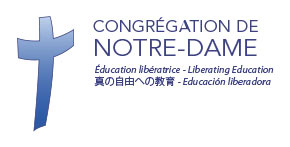In 1720, Bishop de Saint-Vallier wrote to Mother Superior du Saint-Esprit, Marguerite Le Moyne: I do not object to allowing the Sisters to sing motets with accompaniment on important feast days. This was probably copied from Jean Girard (1696-1765), teacher and priest at the Montreal Seminary. This collection of hymns was used by the Sisters of the Congrégation de Notre-Dame.
Jeffery Amherst was born on January 29, 1717 in Riverhead, Sevenoaks (England). He sailed to America in 1758 and headed the second siege on Louisbourg. He assisted the British troops on the continent and sent detachments under Wolfe to destroy French settlements in the Gulf of Saint Lawrence. Shortly after, he became Commander-in-Chief in America. The following year was spent making plans and logistic arrangements for the invasion of Canada and the three-army attack against Montreal, which ultimately fell on September 8, 1760. The war was not over in Europe and Amherst, as Commander-in-Chief, was given other missions in the colonies. He returned to England in November 1763. He died on August 3, 1797 in his residence near the city of his birth.
Paul de Chomedey de Maisonneuve was born on February 15, 1612 in Neuville-sur-Vanne (France). Gentleman, officer, member of the Société Notre-Dame de Montréal, he founded Ville-Marie in 1642 and was the first governor of the island of Montreal. Following the advice of his sister, Louise de Chomedey, Directress of the extern congregation of the Congrégation Notre-Dame à Troyes, he recruited Marguerite Bourgeoys to teach the children of the new colony. De Maisonneuve fully supported this first teacher of Ville-Marie and her community: the Congrégation de Notre-Dame. Recalled in France en 1665, he retired in Paris where he died in 1676.
During times of conflict with the British, the settlers in Montreal were often alerted of eminent attacks. In the summer of 1709, they were told that a naval expedition, headed by General Nicholson, was anchored in Lake Champlain. Jeanne Le Ber, cloistered in the chapel of the Congregation, composed a prayer on an image of the Blessed Virgin requesting protection for the farms of the Congregation. This picture was placed on the barn door of the farm house in Pointe Saint-Charles. Some of the settlers also wanted to benefit from this protection and asked the recluse to compose more prayers on images that they would place in their homes. Jeanne Le Ber refused. The settlers took the Sisters image and copied the prayer. Jeanne prepared a second image for the Sisters, a document which has been preserved to this day.
The seigneurial system was a form of land distribution and occupation in effect under the French and British régimes until 1854. The Sisters of the Congrégation de Notre-Dame had the same rights and obligations as the other censitaires or tenants who worked the land in the various seigneuries, like the one in Montreal which had belonged to the Sulpicians since 1663. The Sisters paid the rents in cash or in kind to the seigneur in exchange for the right to work the land.
